#Huescar
Explore tagged Tumblr posts
Text

Anton Raphael Mengs, Unfinished Portrait of Mariana de Silva y Sarmiento, Duquesa de Huescar, 1775
#art#paintings#museum#art pieces#tumblr art#Anton Raphael Mengs#Unfinished Portrait of Mariana de Silva y Sarmiento#Duquesa de Huescar#1775
70 notes
·
View notes
Text

Sofia Palazuelo, Duchess of Huescar || Rocio Peralta
7 notes
·
View notes
Text
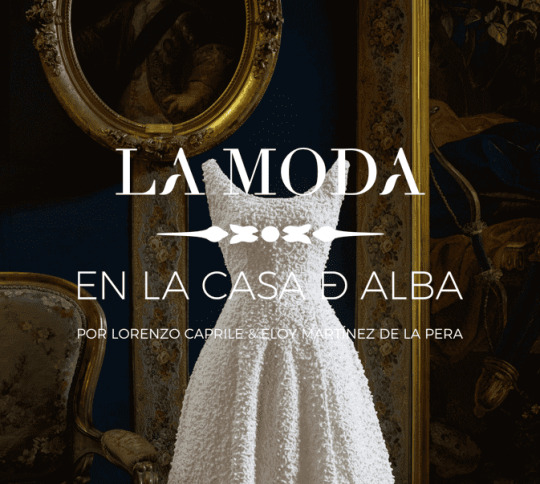
There is a new exhibition called 'La Moda en la Casa de Alba/The Fashion in the House of Alba' at Palacio de Liria in Madrid from October 19th to March 31st. It covers two centuries of the family through their fashion with designs by Charles Frederick Worth, Louise Chéruit, Cristóbal Balenciaga, Flora Villareal, Manuel Pertegaz, and Enmanuel Húngaro. The exhibition includes dresses worn by Empress Eugénie of France, also the Countess of Montijo, and the wedding dresses of Cayetana Fitz-James Stuart, 18th Duchess of Alba, Eugenia Martínez de Irujo, 12th Duchess of Montoro, and Sofía Palazuelo Barroso, Duchess of Huéscar. You can find out more about visiting here.
There are no jewels on display due to security concerns and the cost of insuring them but I noticed in the background of one of the pictures is a portrait of the Duchess of Huéscar wearing the Alba Strawberry Leaf Coronet.

It looks like it was part of the same photo session as the portrait that was found to be on display at Palacio de las Dueñas in Seville in January.
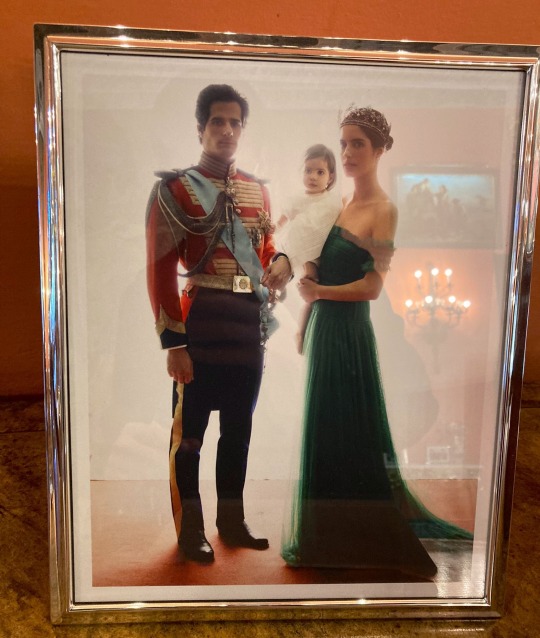
I need to see a better quality picture of Sofia wearing the tiara!
Strawberry leaf ducal-style coronets are very popular amongst Spanish nobility. The one is made of emeralds, diamonds, and pearls and was supposedly a gift from Empress Eugénie to her sister, María Francisca de Sales de Palafox Portocarrero y Kirkpatrick, 16th Duchess of Peñaranda de Duero, wife of the 15th Duke of Alba. Here it is worn by María del Rosario Falcó y Osorio, 21st Countess of Siruela, and María del Rosario de Silva y Gurtubay, 9th Marchioness of San Vicente del Barco, wives of the 16th and 17th Dukes respectively.
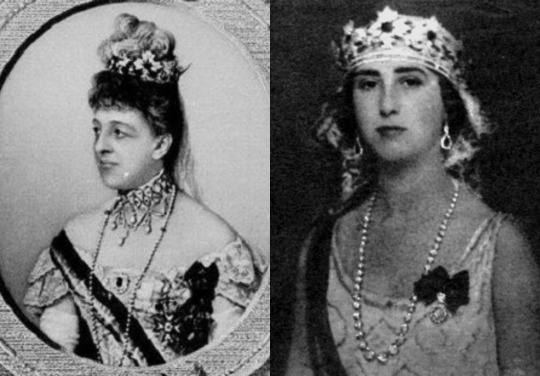
Of course it was most famously worn by María del Rosario Cayetana Fitz-James Stuart y Silva, 18th Duchess of Alba, and most titled person in the world before she passed away in 2014.
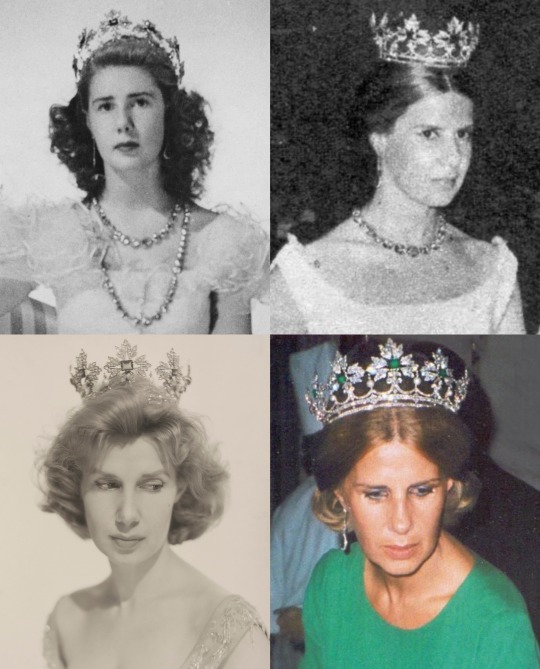
If anyone goes to the exhibition and is able to get better shot of the portrait, I would very much appreciate if you would send it to me.
#Tiara Talk#Duchess of Alba#Spain#Spanish Nobility#Sofía Palazuelo#Duchess of Huescar#emerald#coronet#strawberry leaf tiara#tiara exhibition#sort of
100 notes
·
View notes
Text

3 notes
·
View notes
Text

Unfinished Portrait of Mariana de Silva y Sarmiento, Duquesa de Huescar (1775) by Anton Raphael Mengs
#Unfinished Portrait of Mariana de Silva y Sarmiento#1775#1770s#Raphael Mengs#art#painting#portrait#portrait painting#unfinished#Miss Cromwell
19 notes
·
View notes
Text
oh mengs’ unfinished portrait of the duquesa de huescar you will forever be jane seymour coded. to me
23 notes
·
View notes
Text

Anton Raphael Mengs, Portrait of Mariana de Silva y Sarmiento, duquesa de Huescar (1740-1794), 1775
3 notes
·
View notes
Text

“Lol the Duke of Huescar tryna cosplay as a royal so much he was told he couldn’t give his daughter a 25-word name” - Submitted by Anonymous
27 notes
·
View notes
Text

Anton Raphael Mengs (1728–1779)
Portrait of Mariana de Silva y Sarmiento, duquesa de Huescar (1740-1794)
1775
Oil on panel;86.5 × 69.7 cm
The Metropolitan Museum of Art, New York. Mr. and Mrs. Otto Naumann, New York
Not on view
(*) This portrait of a Spanish noblewoman—herself an artist and a member of the Academia de San Fernando—is both haunting and enigmatic. It is a version of a work that passed down through the sitter’s family and was probably painted at the time of her second marriage in 1775, symbolized by the ring she holds and the faithful lapdog whose shape is left in reserve. We cannot say with any certainty why the portrait was left unfinished and then altered, with her facial features covered as if by a veil. The final result appeals to modern sensibilities and is almost surrealist in its obliteration of identity
Source: @The Met
#painting#abstraction#painters painting#abstract painting#art studio#collage#the painting space#art#photography#60s style
0 notes
Text
Not Everything is Rosy-Day 22 of Bicycling Across Morocco and Spain (and England.)
“Tu es sola?” asks the tipsy man sitting down the bar from me. I had just ordered my glass of wine, proud that I had stayed up late enough to get something to eat in Huescar. It is not the drink I had wanted, it was the tapas. Little delicious snacks that come free with a two dollar glass of wine. Get two glasses and it is a meal. Delicious and the cheapest thing going. “Where is your husband?”…

View On WordPress
0 notes
Photo

In 1809 the Spanish town of Huéscar, declared war on Denmark during the Napoleonic Wars. It was forgotten until 1981 when historians discovered the declaration. In 172 years of this war, no one was killed or injured.
(pictured: Huéscar from http://abiteofspain.blogspot.com/2012_04_01_archive.html)
2 notes
·
View notes
Text
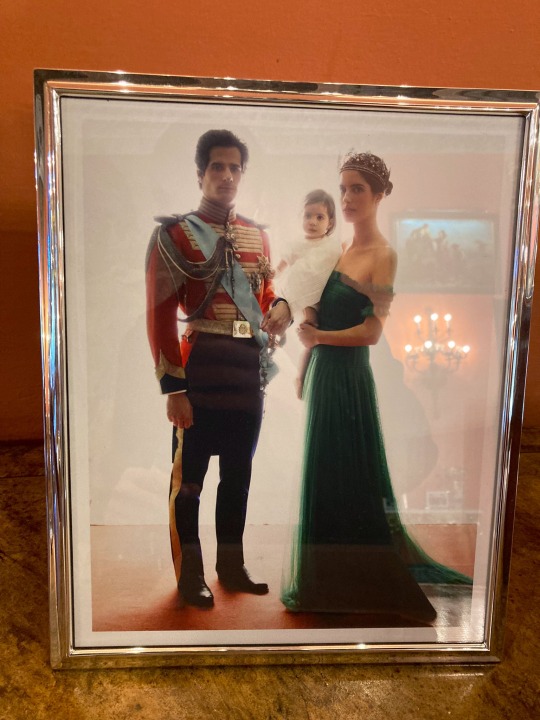
A portrait of Fernando and Sofía (née Palazuelo), The Duke and Duchess of Huéscar with their eldest daughter Rosario, is being displayed at Palacio de Las Duenas in Seville. Sofia is wearing the Alba Ducal Coronet. The Duke and Duchess have recently welcomed their second child, Sofia.
credit
#idk man he’s just too attractive not to post#she’s gorgeous too although I don’t love the tiara placement#duke of huescar#duchess of huescar#fernando fitz-james stuart#sofia palazuelo#spanish nobility
33 notes
·
View notes
Photo

History can be surprising and hilarious sometimes. And this is exactly one of these times. The story of how a tiny Spanish town single-handedly declared war on Denmark and forgot about it. Causing the entire country to have an open war front for almost two centuries, that a mediatic dry spell blew out of proportion in the 80′s!
*A LITTLE BIT OF CONTEXT*
Everybody hated Napoleon (except Denmark, apparently), but in 1796, Spain reluctantly signed a treaty with France against Britain, by then enemy of both. Which is why in 1807 Spain sent an expedition to Denmark to participate in the Danish-Swedish war and prevent the British ships form reaching Jutland.
However, a year later the Spanish king abdicated, Napoleon tried to crown his brother, but Spain wouldn’t have none of it. That gave way to the beginning of a massive rebellion: the Peninsular War (Or the Spanish War of Independence). The former British enemies became allies and the Spanish troops in Denmark turned into a rebel squadron that Napoleon blocked from leaving Denmark. Some left anyway on English ships, some waited off and drank mead for a few months.
In any case, the Spanish new government put Denmark on the list of no-no countries for a while.

*THE ENEMY OF MY... FRIEND? ENEMY? ENEMY OF SOME OF MY FRIENDS AND FRIEND SOME OF MY..??? WELL, SCREW IT, IT’S MY ENEMY ANYWAY!!*
And here is where Huescar comes in. That tiny Andalusian town, composed by goat shepherds and farmers, somehow managed to get their hands on this information and either misinterpreted it or gave it a very weird lecture. And of course instead of reacting like any other normal human beings would, in the city hall, for some reason, decided that they were cool and macho enough to go ahead and valiantly DECLARE A FULL ON WAR ON DENMARK. For... some reason...
Never mind it was a country that most of their simple townsfolk never even heard of! That all happened on November 11, 1809
But of course, it was in the context of the Peninsular war. So the good inhabitants of Huescar soon discovered that it was way more satisfying to fight the French troops that were stealing their potatoes than urging plans to send their army of teenagers with pitchforks to Denmark. So they kinda... forgot about their war declaration.
Needless to say, Denmark never found out in the first place.
*CUE IN 1981 AND AN ARMY OF BORED JOURNALISTS*
In the last stages of the Spanish Transition to Democracy, an investigator from Granada was digging through old documents int he city hall of Huescar and discovered the open war declaration. He published the hilarious news piece in a local magazine, that a newspaper from Granada picked up, from where it got snatched up by the Spanish National News Agency (EFE) - (bear in mind, it was august 1981, there was literally nothing else to write about) - so when the Danish correspondent in Madrid heard about it and stopped peeing himself from laughter, he notified the Danish news network.
Obviously the discovery that a tiny town in the Spanish mountains had been “waging war” with them for almost two centuries couldn’t have been more adored by the Dane folk!! (and the rest of the world) 😂😂😂

*THE PEACE TREATY ft. DRUNK VIKINGS*
The profound desire for peace from the inhabitants of Huescar, that swore to be “exhausted from so many centuries of warring” gave way to a formal declaration of the peace treaty, that November.
But of course we are talking about Denmark and Spain now. So instead of making this simple, they threw A GIANT PARTY!!
Hundreds of Danes migrated to Huescar... DRESSED AS VIKINGS!!
The roads accessing the town put up signs: Attention Danish! You are entering enemy territory, beware of the consequences.
The Danish Ambassador and his delegation, as well as dozens of media correspondents, assisted to the symbolic declaration of peace. The entire town and people from all around Spain participated too. The town was covered in Spanish and Danish flags, songs were sung, a parade took place.
And of course after that almost tree days of banquet, dances and celebrations followed. There was Spanish wine, and there was Danish mead, and there was roasted lamb and cake!
But the slogan of the party is the best part: “Afortunadamente, siempre habrá una paz que declarar, una copa con que brindar y unos amigos a quienes abrazar”. Aka:
“Fortunatedly, there will always be a peace to declare, a drink to toast and friends to embrace.”

Ref & photos: (x) (x)
Written for: @hetaliafandomhub Country embassy: Spain
#I've got a collection of these xDD#aph ambassador#aph spain#denmark#hetaliafandomhub#huescar#spain#spanish history#thanks to a cherished follower for reminding me of this today!#this is gonna be a series of posts#uncanny history of spain#embassy board
94 notes
·
View notes
Photo

Le mariage n'est pas le plaisir, c'est le sacrifice du plaisir, c'est l'étude de deux âmes qui pour toujours désormais auront à se contenter l'une de l'autre.
- Paul Claudel
**The Duke and Duchess of Huéscar’s wedding at the Liria Palace in Madrid, 2018.
#claudel#paul claudel#quote#french#marriage#relationships#sacrifice#duty#aristocracy#duke of huescar#spain#society
31 notes
·
View notes
Text


The Duke and Duchess of Huéscar arrive at The Palace of Liria to attend the wedding of the Duke's brother.
May 22, 2021. Madrid, Spain.
#spanish nobility#house of Alba#casa de alba#Fernando Fitz James Stuart#Sofía Palazuelo#Duke of Alba#Duchess of Alba#Duke of Huescar#Duchess of Huescar#Wedding of Carlos Fitz James Stuart#free rein
31 notes
·
View notes

